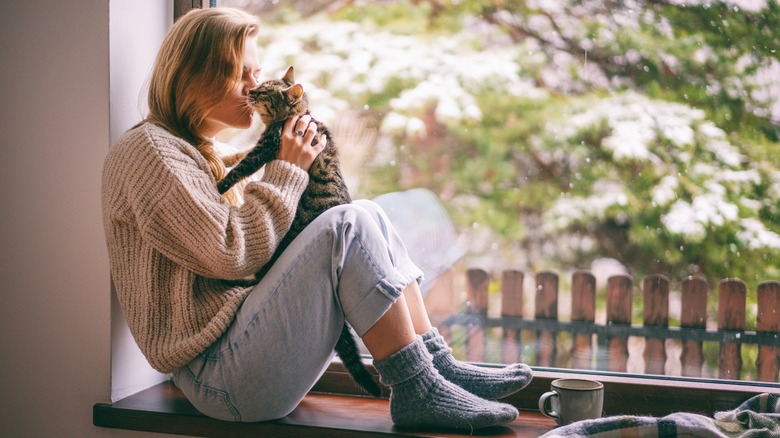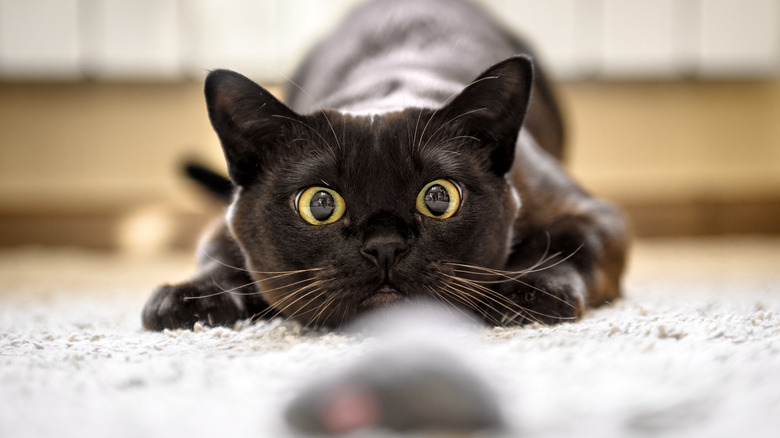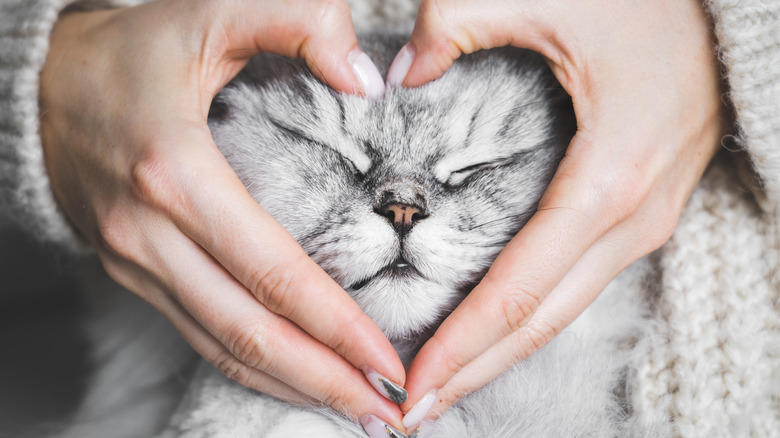The Weird Way You Can Communicate With Your Cat
Cats — specifically the domestic variety — have made a name for themselves as some of the world's most adorable and vicious little housemates. They've taken the hearts of millions and have been the rulers of the internet with the rise of cat videos showcasing things like some of the biggest cat fails caught on camera. These furry felines are some of the best companions and leave many wishing they could have a conversation with one. It turns out communicating with a cat is already possible.
Domestic cats already show their humans affection through actions like purring and allorubbing, which, according to Companion Animal Psychology, is a sign that a cat considers a human part of their social group. Allorubbing is the action of a cat rubbing its body or head against a human or other animal to show affection (per Companion Animal Psychology); this behavior has been shown to occur particularly when a cat's owner is feeling emotional distress, per a study published by Nature. However, for those seeking more ways to communicate with their domestic felines, another action proves successful in bonding with these furry friends.
Cats communicate with their eyes
Social communication between cats and humans is a conundrum many have found amusement in for years. The question of whether or not a cat likes their humans, tolerates them, or spends its waking hours plotting their untimely demise haunts many cat owners around the globe. However, according to one study published in Nature, "The role of cat eye narrowing movements in cat-human communication," suggests that cats may subtly show their positive feelings for you regularly.
Cat eye narrowing, or a slow-blink sequence, is a series of half-blinks from a cat, followed by eye narrowing or eye closing, per Nature. The study on cat eye narrowing had twenty-one feline participants from fourteen households and found that cat eye narrowing occurred more often as a response to slow-blink sequences from their owner compared to when no owner interaction was present. A second experiment in the same study showed that when someone who is not the cat's owner initiates a slow-blink sequence, the cat is more likely to approach them compared to a non-familiar human who does not initiate a slow-blink sequence. This communication method isn't just limited to cats. Other species, like cows, dogs, pigs, and horses, have used either the slow-blink or other expressions to communicate with humans through cues (via Nature).
Cats use eye narrowing to express trust
Species like horses and goats can tell the difference between human emotions. According to Nature, horses are even known to adjust their behavior to match the human with whom they interact. Communicating with a cat or cow, even by way of eye narrowing, is just one way to converse with these four-legged friends. Cats have been drawing the attention of humans for years through purring and even donning different facial expressions around humans vs. when humans aren't around, per Nature.
While cats might spend hours appearing sassy and aloof, maybe only making an appearance when their bowl is running low on food, they also have their own unique ways of letting humans know they trust them and that they are, in fact, a part of their circle. Fortunately, we can express these same sentiments to our cats by communicating in a way they understand. So if you want to communicate with your fluffiest housemate while also looking like you're partaking in the world's strangest staring contest, try initiating a good ol' slow blink.


